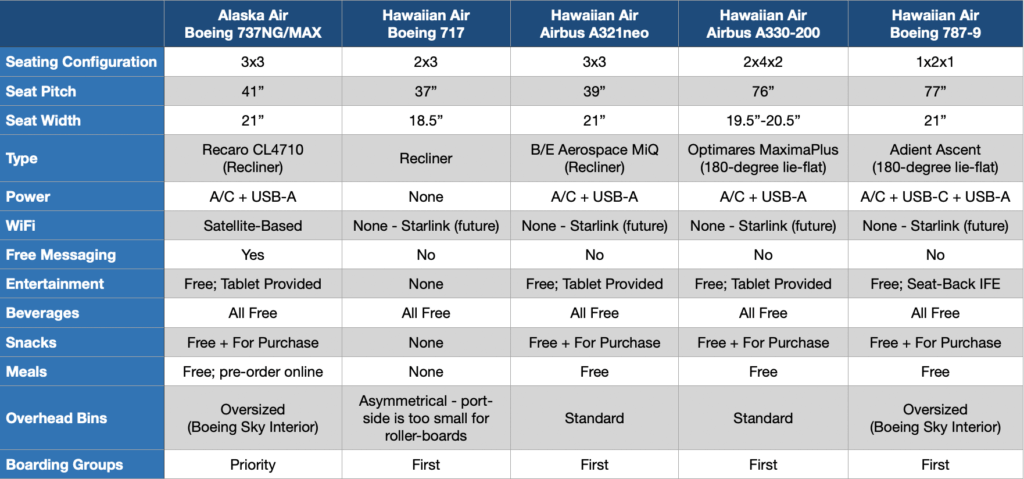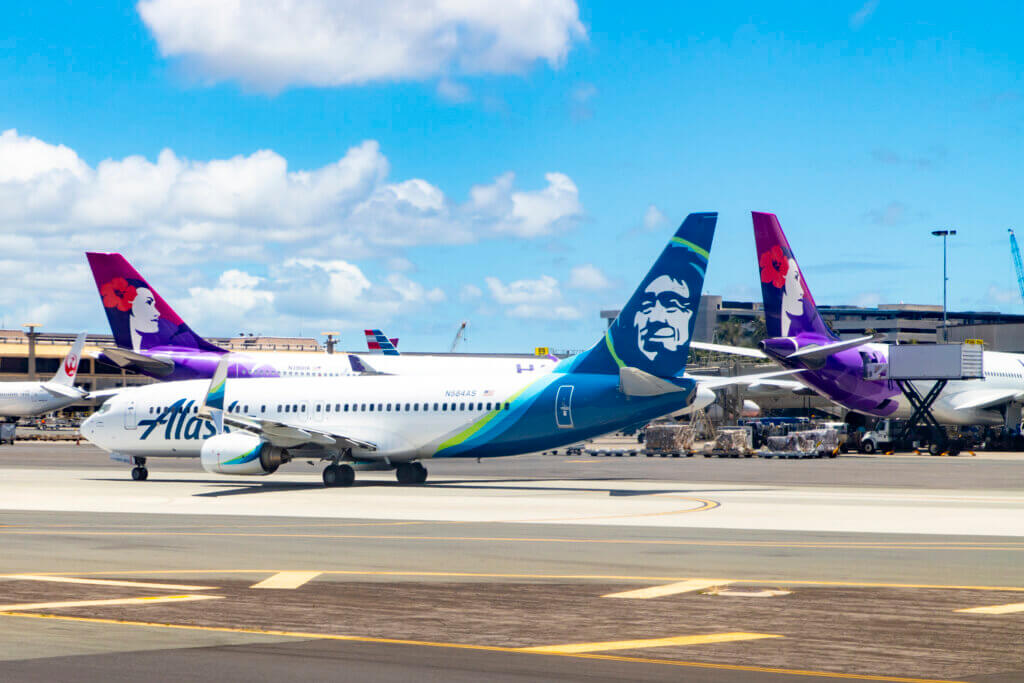In my last installment of the series, I’m covering Alaska v Hawaiian-First Class. Admittedly, this is a topic that I have very little experience of my own with. Unlike many of the big-name travel bloggers, I rarely travel in First because I just don’t have the points/miles or cash to do so. But it’s pretty easy to draw conclusions here.
My Alaska v Hawaiian-First Class comparison is the only one in this series that has large variations in terms of hard product offered. And to anyone even somewhat familiar with both airlines, this is the only comparison in which (in my opinion) Hawaiian completely annihilates Alaska, at least when it comes to hard product. When it comes to their respective soft products, I believe Alaska still wins… But that’s highly subjective.
Alaska v Hawaiian-First Class Comparison
Like the prior two posts in this comparison series, I’m going to dump all of the data points I could find into a table to make it easier to compare. Based on hard numbers, it’s easy to see what Hawaiian wins the Alaska v Hawaiian-First Class comparison. After all, Hawaiian is the only one of the two that offers a lie-flat First Class product. Sure, the old Oprimares MaximaPlus product on the A330s isn’t the most competitive out there, but the upcoming Adient Ascent Leihōkū Suites are definitely up there. Remember, American Airlines and Qatar are both using these seats onboard their 787s.
What’s interesting, though, is that Alaska Air, Hawaiian’s A321neos, and 787s all feature First Class seats with identical widths at 21″. The Optimares on the A330s are, understandably, narrower, thanks to Hawaiian cramming eight of them into one row versus the four they’ll have on the 787.
Of course, when we look at the narrowbody fleets of both airlines, things get a bit more similar. Actually, First Class on Alaska’s Boeing 737s is a smidge better than on Hawaiian’s A321neos. That’s because, though different manufacturers make the seats, they’re very similar. However, Alaska gives you two extra inches of pitch, which should give you a bit more legroom. It’s also worth noting that all First Class products feature some sort of tablet for IFE, though Hawaiian’s 787s will finally feature a built-in solution.
When it comes to soft products when doing an Alaska v Hawaiian-First Class comparison, things are going to be quite subjective. Both airlines offer complimentary meals in First Class that are competitive with one another, especially on routes between the West Coast and Hawaii. Hawaiian’s menu is developed by local celebrity chefs, led by the Airlines’ executive chefs – Wade Ueoka and Michelle Carr-Ueoka of MW Restaurant. Alaska used to partner with Seattle-area celebrity chef Tom Douglas but no longer has a named chef assisting with their catering. To their credit, though, they feature popular West Coast brands onboard, such as Tillamook, Salt & Straw, and Ellenos, among others.
It’s worth noting that Hawaiian does offer vegetarian, vegan, and gluten-free options now, which wasn’t always the case. Unfortunately, Alaska doesn’t appear to make any such accommodations, and neither appears to cater to any allergies outside of gluten. That’s a major weakness in comparison to larger carriers, such as American. Even JetBlue beats both airlines in this area, so hopefully, it’s something they’ll improve on together in the future.
Final Thoughts
There you have it. Whereas Alaska Air beats the pants off of Hawaiian when it comes to Main Cabin and Extra Space products, Hawaiian supremely beats Alaska in First Class, as is evident in my Alaska v Hawaiian-First Class Comparison. Well, at least it does on widebody aircraft. If you’re on a flight operated by Hawaiian’s A321neos, your First Class experience will be comparable (if not a little worse) than Alaska’s. Unfortunately, these birds are common on less popular West Coast routes and for virtually all direct flights between the Continental U.S. and Kahului, Kona, and Lihue.
Post-merger, I wouldn’t expect any of the above to change. While it’d be nice, I don’t foresee Alaska installing lie-flats onboard its 737s for transcon and Hawaii routes, though its possible Alaska could begin using widebodies on specific high-volume routes. This is the most intriguing aspect of the combined airline, but we’ll likely have to wait at least a couple of years after the merger closes to see how this plays out.
At any rate, what do you guys think? Which First Class product do you prefer?


